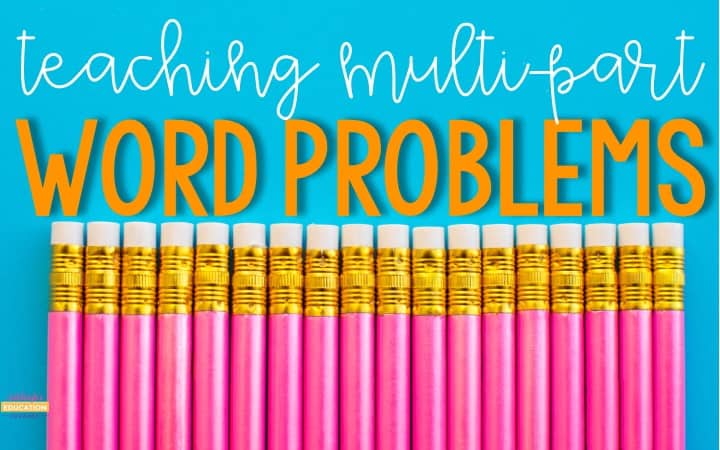
Multi-part or multi-step word problems has to be one of — if not THE — most challenging parts of the year. I’ve found that saving multi-step word problems for the very end of the year or right before testing is the least efficient way to teach this tricky skill. Instead, students need instruction on multi-step word problems embedded in curriculum throughout the year. Students need time and practice in order to be proficient with these problems. This post shares some of my favorite ways to teach and practice multi-step and multi-part word problems.
Numberless Word Problems
Before students can begin mastering multi-step word problems, they need to learn how to solve single-step word problems. When students are presented with a word problem, they tend to rush to solve the problem, without thinking about the meaning of the content. In fact, I proved this to my students with this little exercise.
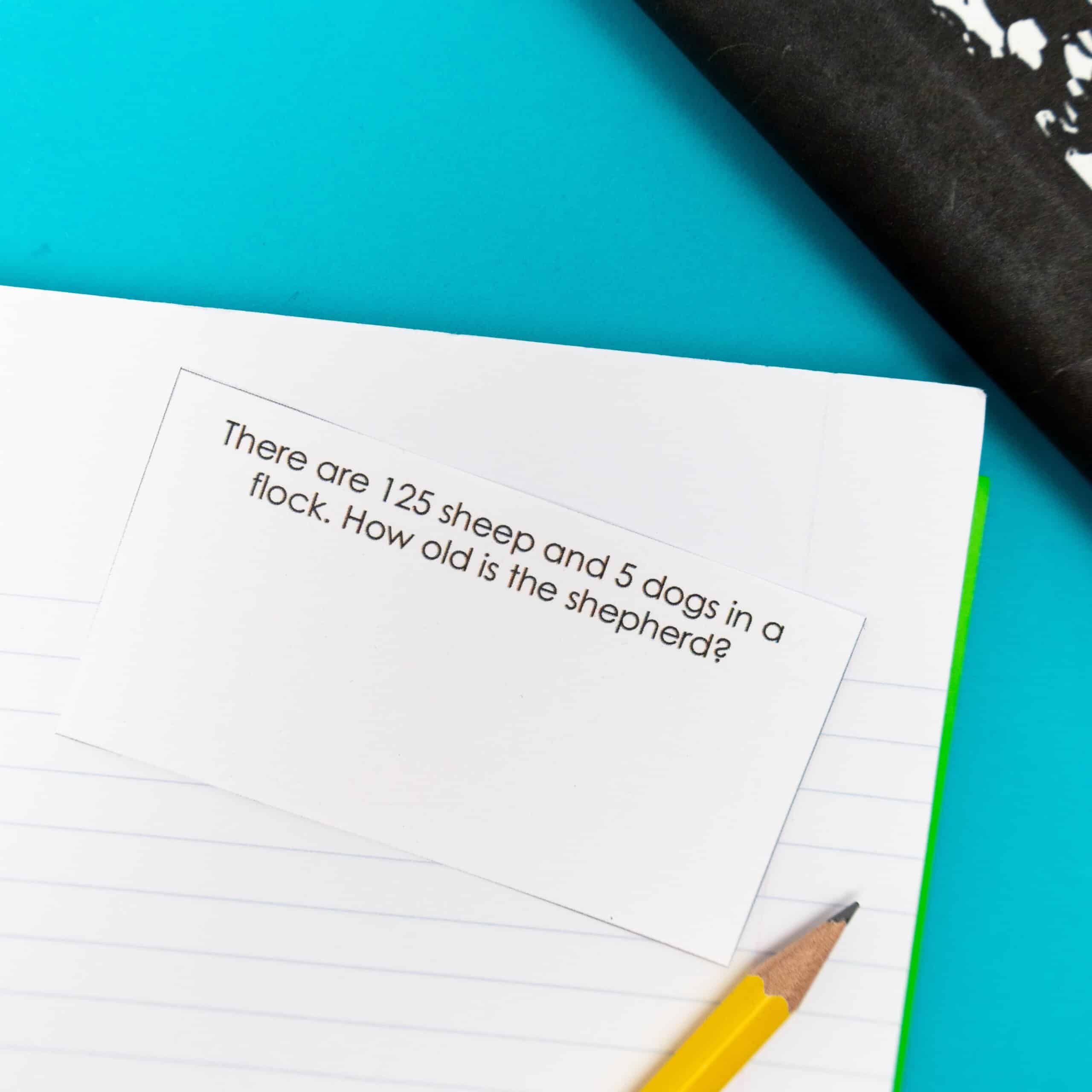
As you can see, there is no solution to the problem, but I have seen many excellent math students “solve” the problem. My hands-down favorite way to prevent this is through numberless word problems. In fact, I recently wrote an entire blog post dedicated to numberless word problems. You can find that post here. In a nutshell, with numberless word problems, all numbers are removed temporarily while students process what the situation is and determine what information is needed to solve the problem. Then, numbers are gradually revealed until a solution is reached. Numberless word problems are a great way to help students notice the relationships in problem situations before they are presented with a number.
Step-By-Step Directions for Multi Step Word Problems
I don’t have any catchy acronyms, such as CUBES, for teaching the steps of solving multi-step problems. This isn’t because I don’t like that strategy, but my brain likes breaking things down into detailed steps.
I like detailed steps, because they help guide students through the process of solving multi-step and multi-part problems. It also helps me as I verbally model the steps to solving a multi-part problem. I have a tendency to skip or combine steps, so this helps me break things down into more manageable pieces for students. I’ve found that the more students apply these steps, the more they will internalize the steps and the anchor charts and posters become no longer necessary. You can download the handout with step-by-step directions here.
Multiple Representations
Multiple representations are used to understand, to develop, and to communicate different mathematical features of the same object or operation, as well as connections between different properties. These representations include graphs and diagrams, tables and grids, formulas, symbols, words, concrete models, and manipulatives.
When I first learned about multiple representations, I was quite frustrated. I knew it was completely unrealistic for students to use multiple representations to solve every word problem they encounter. There simply isn’t enough time during the day. I quickly realized that it is not necessary for students to use this for each and every word problem they solve. However, I do like to have students use this strategy a couple times a week. We often complete one together for guided practice and then I incorporate another opportunity for practice in our centers.
Students need the most modeling and scaffolding with the written response portion, as they typically want to write the shortest and most concise answer possible. To prevent this I require students to restate the question, which helps students focus on what the question is asking. I then encourage my students to label their numbers. Rather than writing I added 10+35, they would write I added ten forks with 35 spoons. I also highly encourage students to incorporate proper math vocabulary.
I love using this graphic organizer with any set of task cards. Since not all problems lend themselves to all types of representations, I only require students to use words and equations for two of their representations. I allow students to select the other two representations they think work best with that particular problem.
We do a few of these together for guided practice, and then I have students work on their own. I slowly begin to remove the scaffolding until students are solving multi-step word problems independently. This can be completed through centers, in students’ math notebooks, or as a part of students’ math warm-up. You can find my Multi-Step Word Problem task cards here.
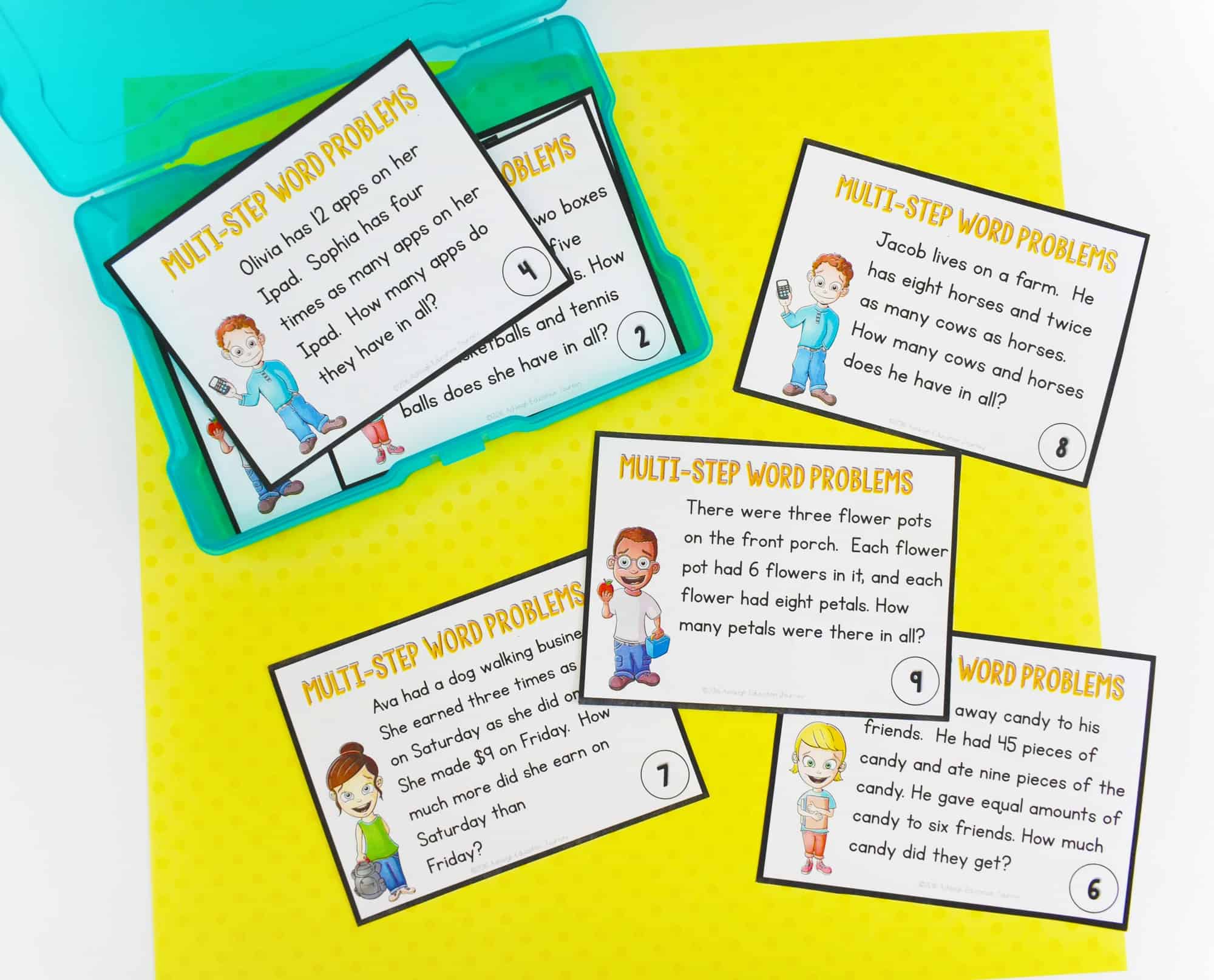
Consistent Practice
It’s certainly not enough to introduce and practice multi-step word problems. This is one of those skills that requires practice throughout the entire school year. As I have my students practice, I’m careful not to assign problems with operations or size of numbers that I have not yet introduced. I don’t want my students stumped because of content I have yet to teach. You can find find the full page multi-part problems for third grade and for fourth grade.
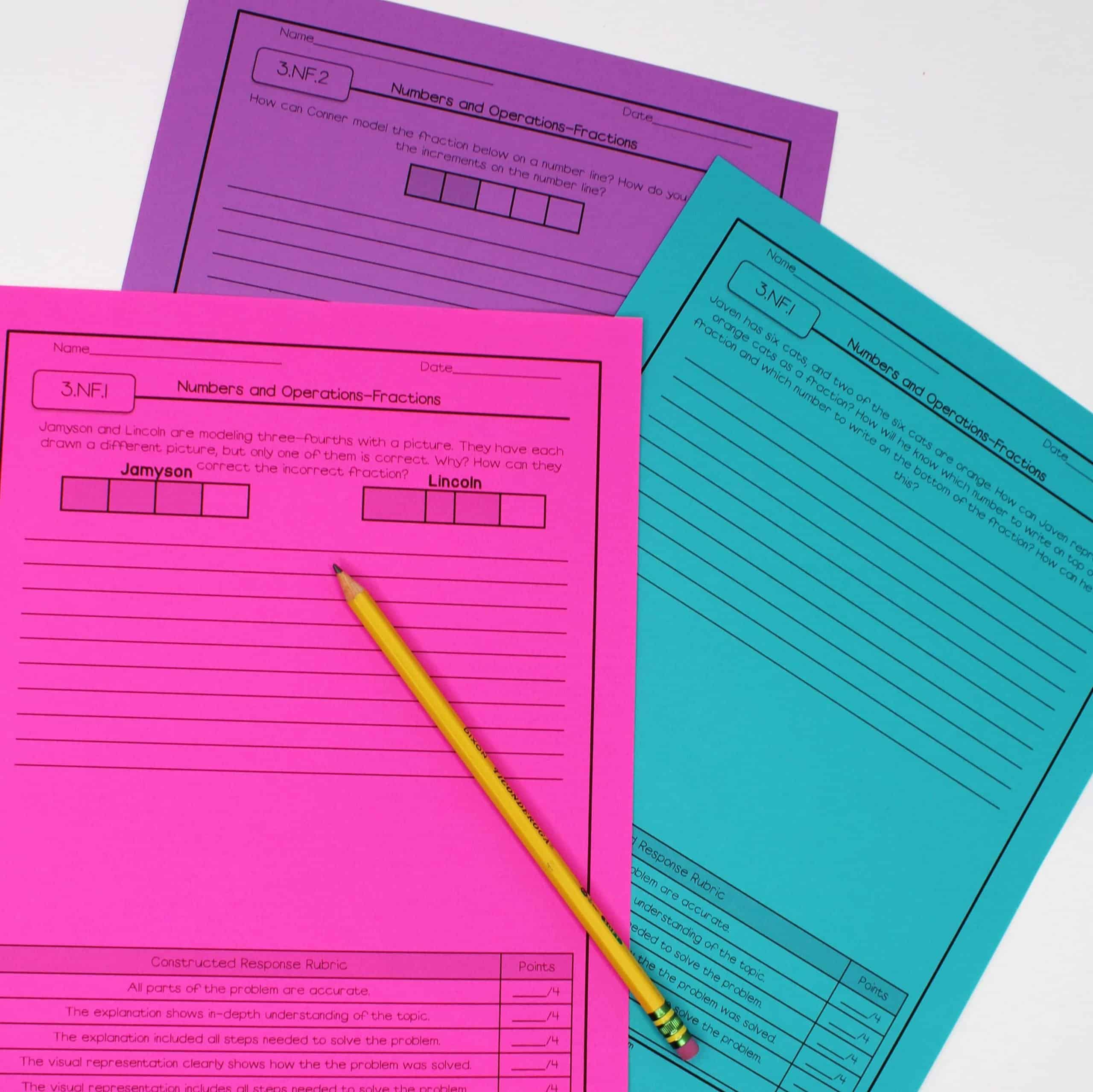
I also incorporate multi-part word problems into our math centers. I love using the fall set (3rd grade and 4th grade) and the winter set (3rd grade).
I hope these ideas and strategies are helpful for you and your students. I’d love to know any additional tips you have for teaching this tricky skill.

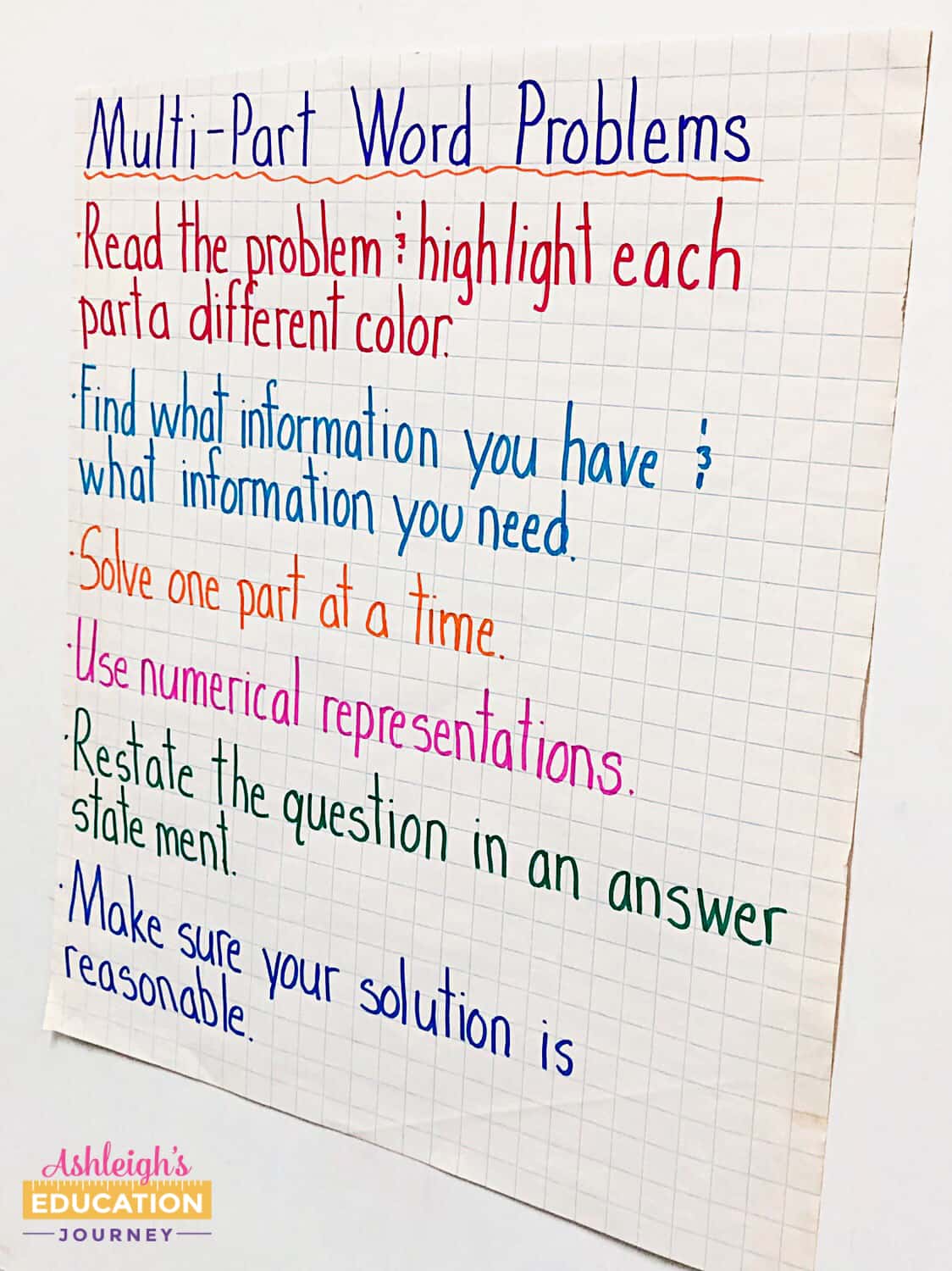
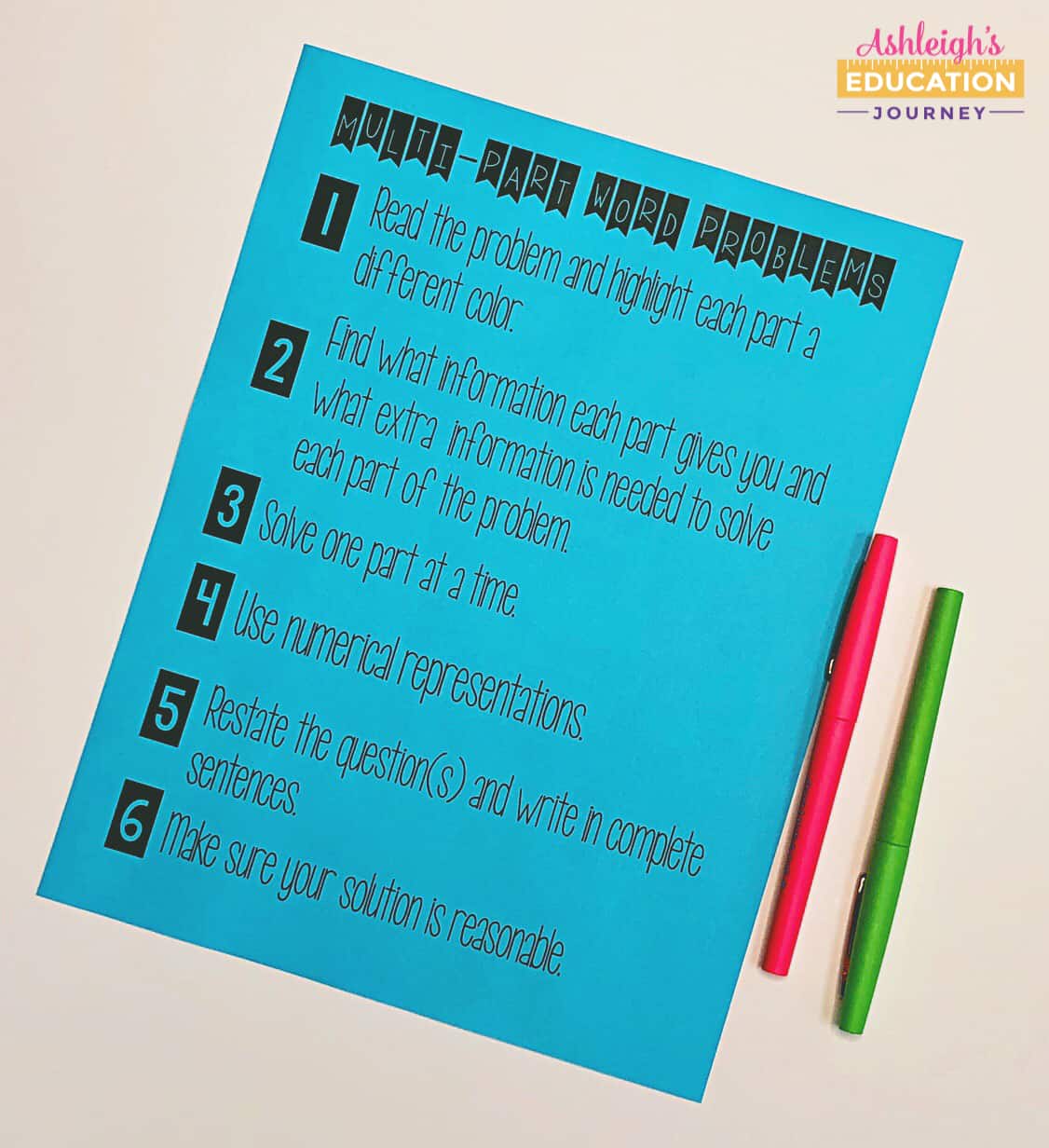
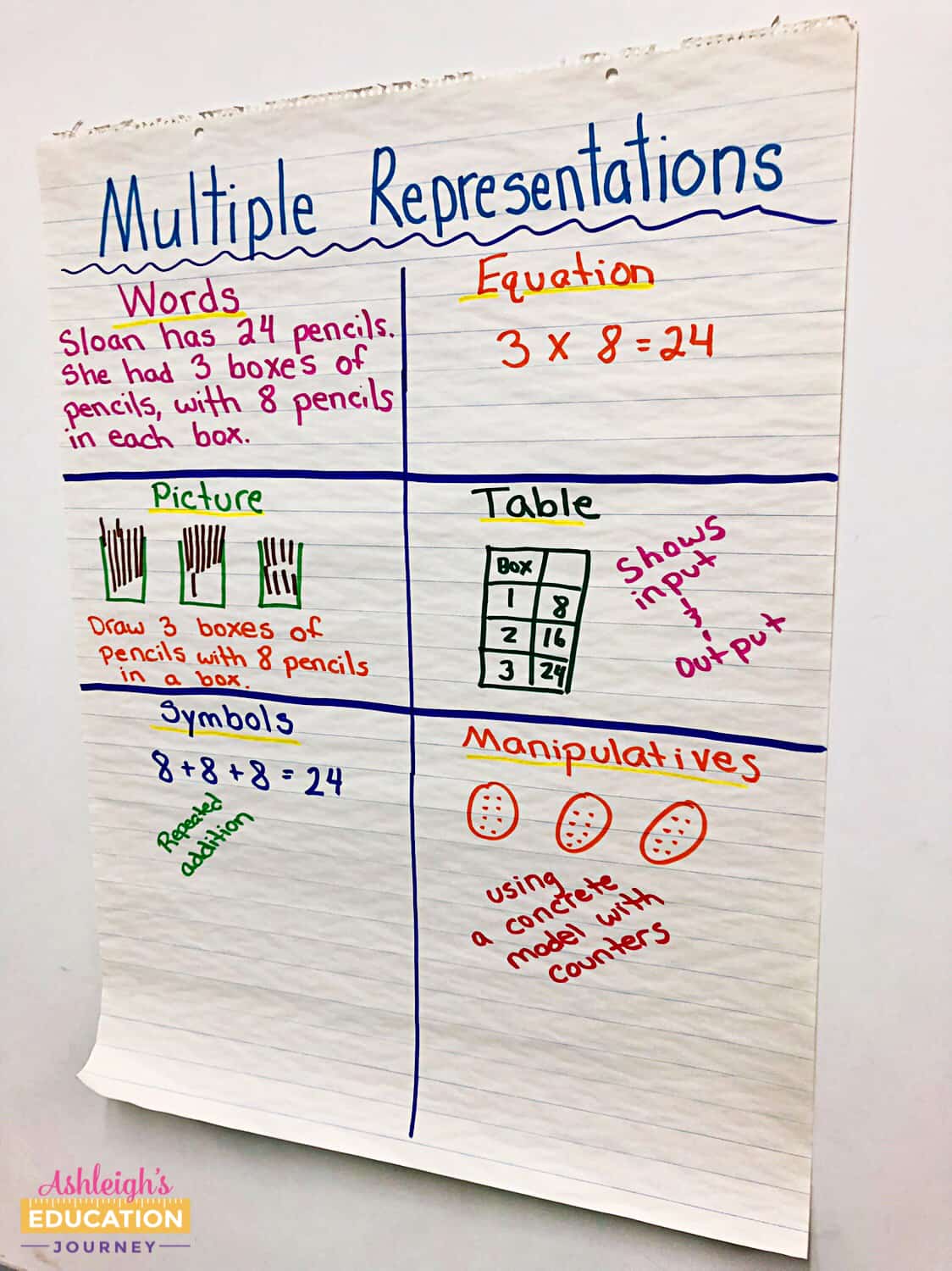
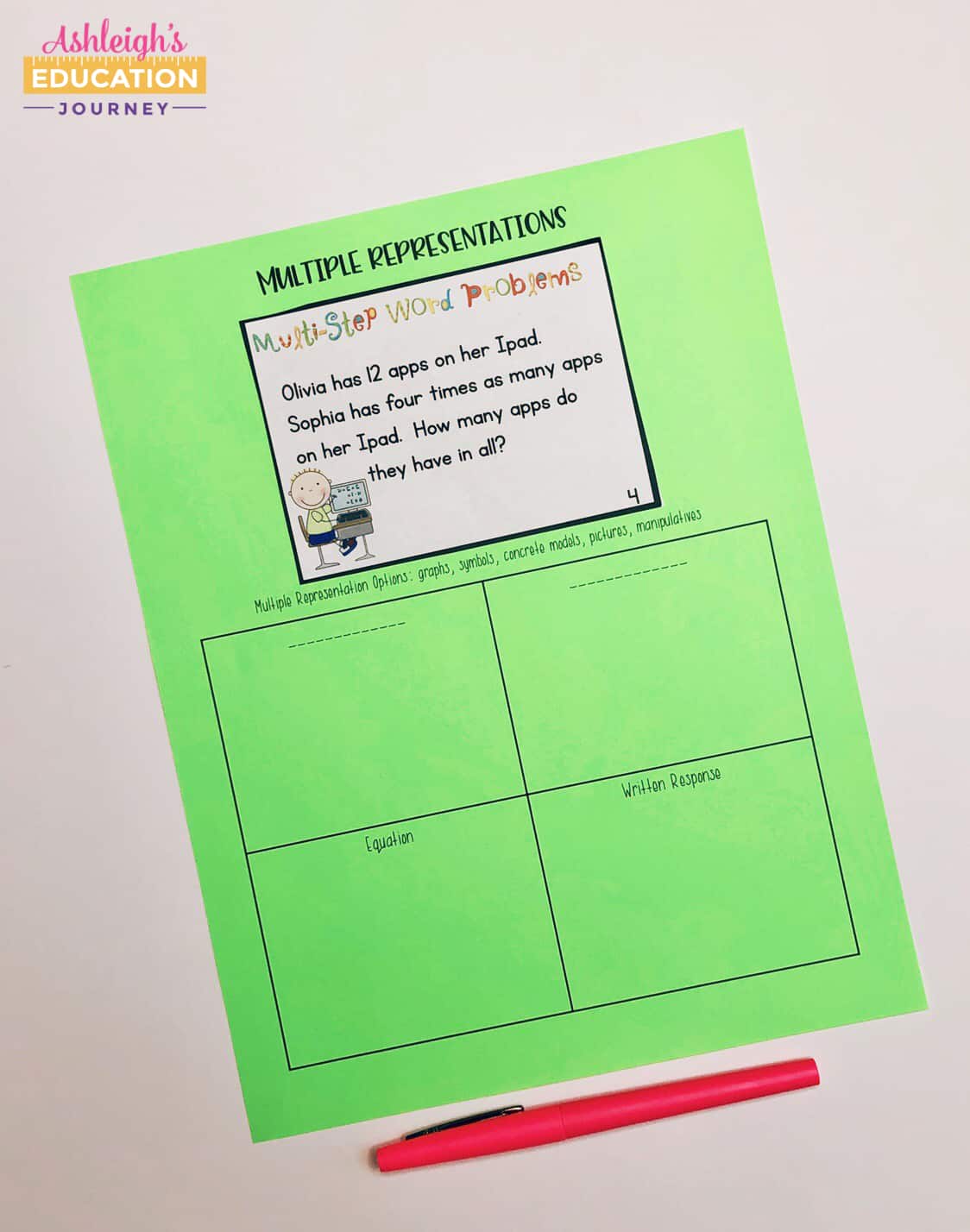
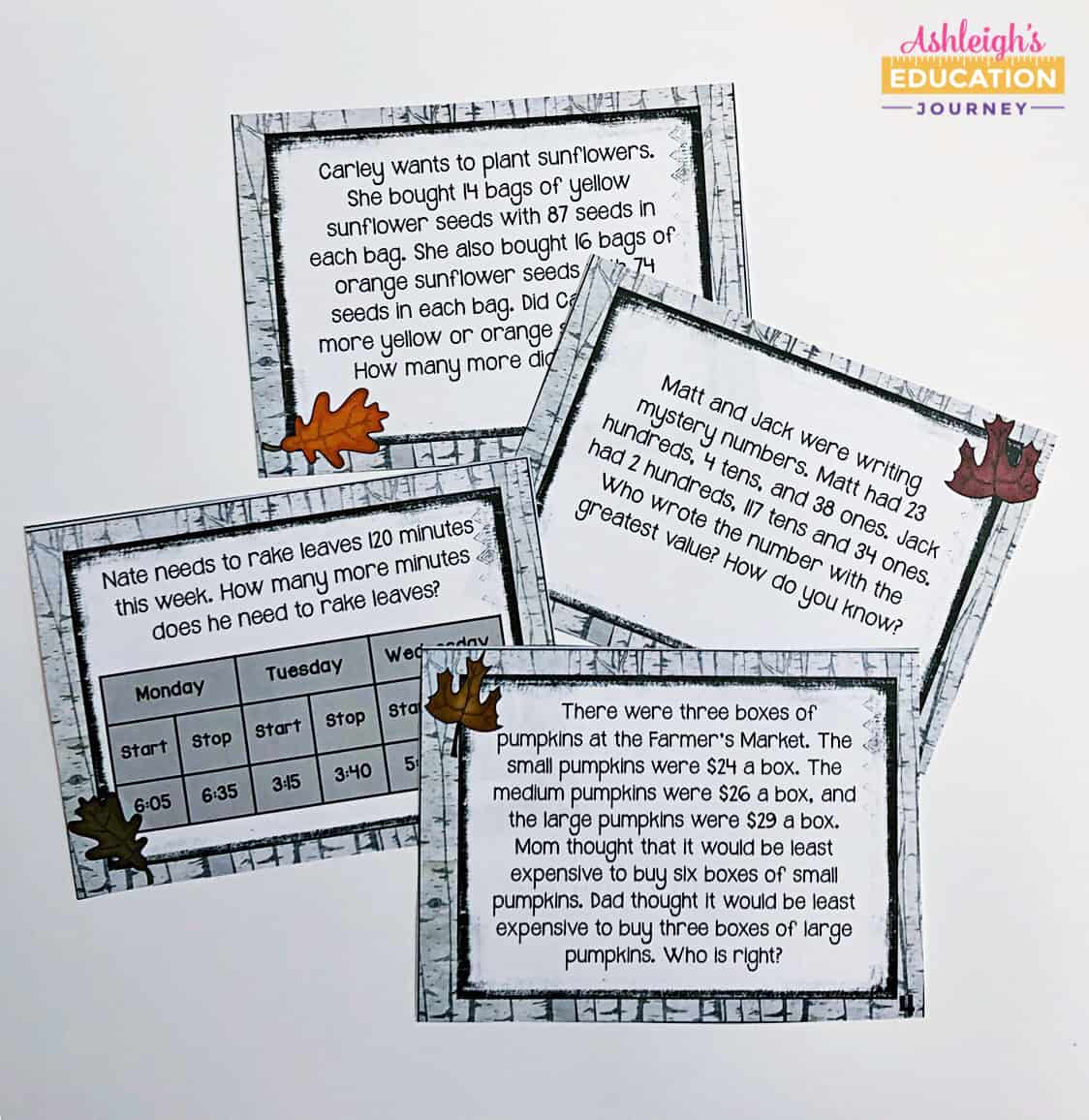
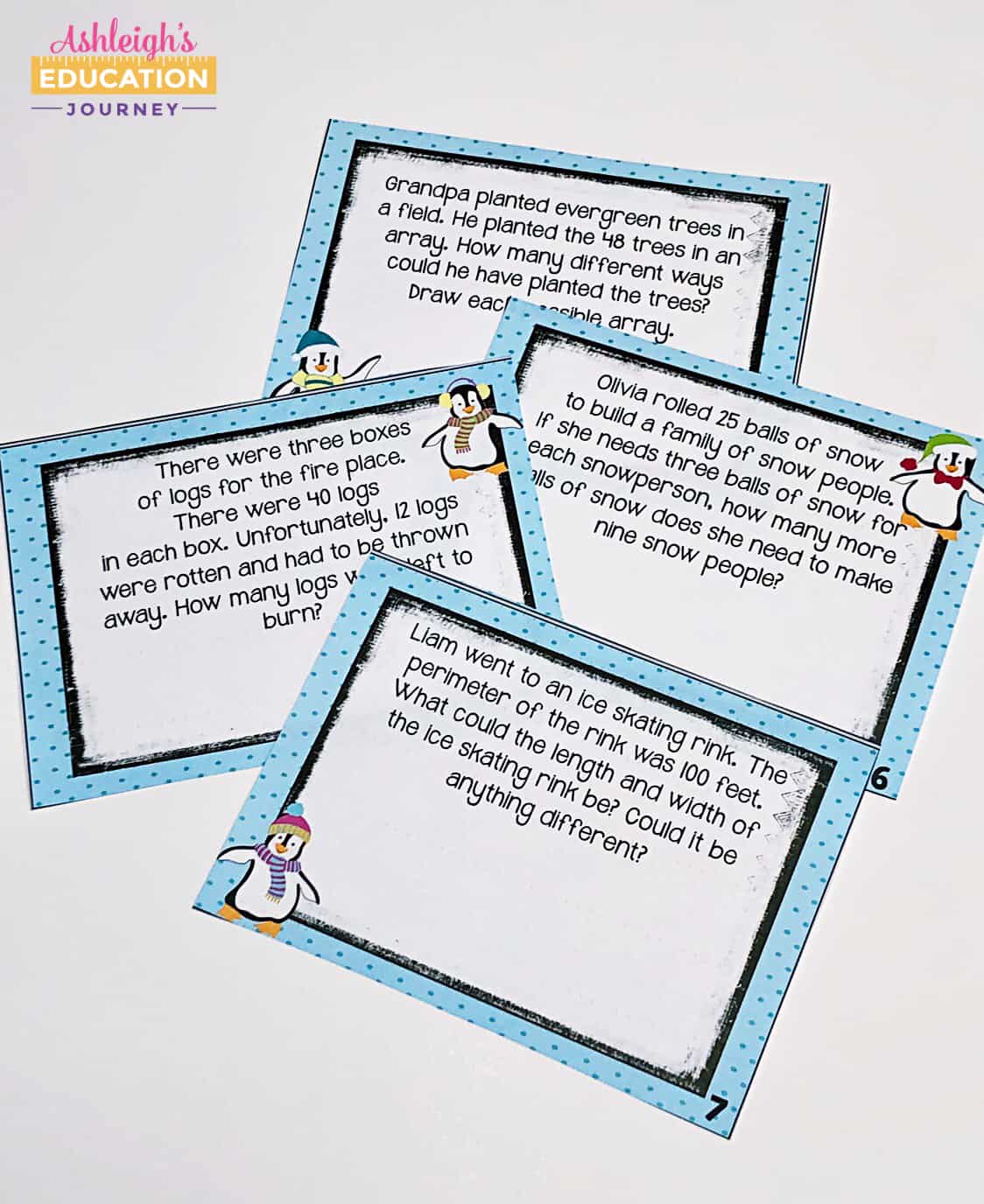


Love these ideas.
I’d love to get some of the examples (task cards, etc) you’ve shown.
Which ones are they?
Thanks!
I updated the links in the post:)